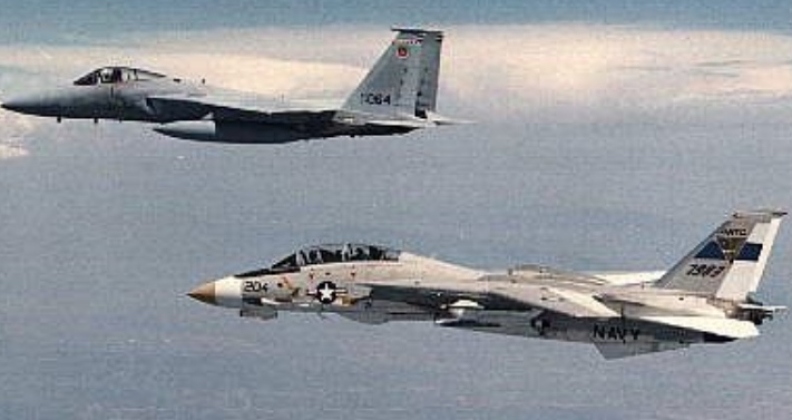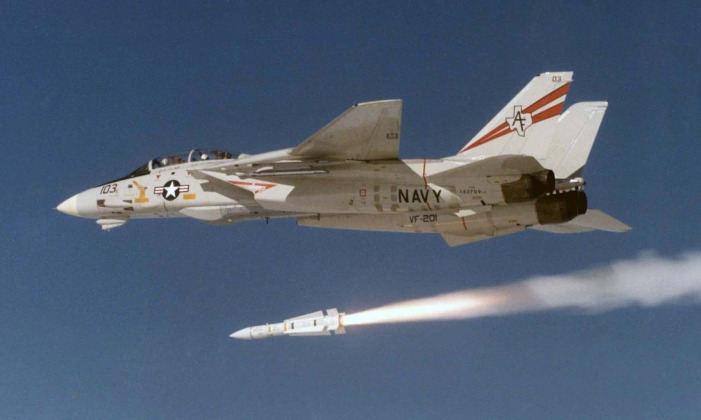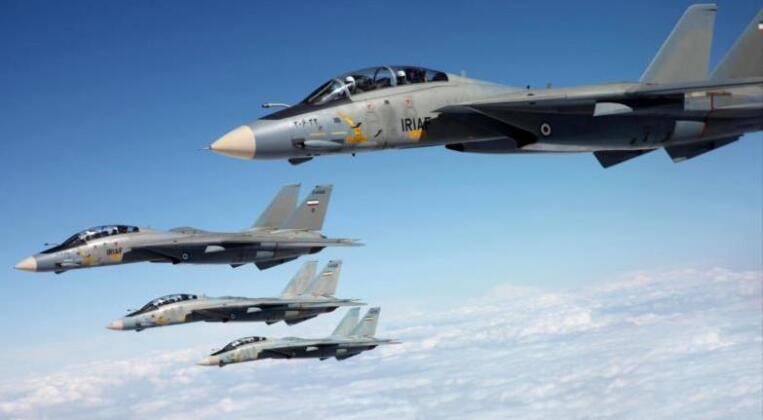News
How These Iranian Units Fielded More Dangerous Fighters than Any Other Air Force – Including the U.S. and USSR
Bordering both the Soviet Union to the east and Soviet aligned Arab nationalist states to the west, and enriched by a spike in oil prices in the 1970s, Iran emerged as a leading client for top end American and British armaments during that decade. This not only provided a major boon to Western defence industries, but also placed further pressure on the defences of NATO adversaries as Iranian offensive capabilities grew significantly. Although this would have wide ranging impacts on Iranian military power, from its fleet of cutting edge tankers for aerial refuelling to its British Chieftain tank units that outnumbered those of the British Army itself, perhaps the most notable asset Iran came to field was the F-14 Tomcat heavyweight fighter. The Tomcat was the first fighter of the fourth generation to enter service anywhere in the world, and the first of its generation ever exported, with Iran being the only client due largely to its extreme cost. The F-14 was by far the largest and heaviest fighter in the world, and would remain so for several decades, which allowed it to retain a much longer range and carry oversized sensors and missiles for a tremendous combat potential. The result was an aircraft with very high operational costs which no air force other than that of Iran was willing to finance, with Britain finding it unaffordable and even the U.S. Air National Guard, which evaluated it to be the best suited to protecting the American mainland, forced to rely on the smaller and much cheaper F-15 due to cost constraints.

Deliveries of the F-14 made Iran the second operator of fourth generation fighters after the U.S. Military, with the U.S. Navy fielding F-14s from 1974 and the Air Force fielding the F-15 from the following year just months before the first F-14s reached Iran. The Tomcat’s capability advantages over its rivals primarily centred around its sensor suite and missiles, with a level of situational awareness in a league of its own and rivalled only by the Soviet MiG-31 interceptor that became operational in 1981. The AIM-54 Phoenix missile was the first and for close to 20 years the only one in the world with ‘fire and forget’ capabilities due to its active radar guidance, which combined with a very large warhead, Mach 5 speed and extreme 190km range making it entirely unrivalled. The missile was too heavy to be employed by other aircraft, which neverthless lacked sensors powerful enough to make effective use of it.
To place the AIM-54’s capabilities in perspective, the F-15’s AIM-7 missile needed to be guided throughout its course by the fighter’s radar due to its poorer guidance system, and could only engage up to 70km away or just over one third of the range. With 79 F-14s split between two units based at Esfahan and Shiraz, there was little doubt that the Iranian Air Force had a more capable fighter class than any other air force in the world, rivalled only by the U.S. Navy’s own F-14s. While the F-15 would struggle against Soviet Su-27, MiG-31 and even older MiG-25 jets, the F-14’s capabilities particularly for enhanced U.S. Navy variants from the 1980s and early 90s would not have any near peer challengers into the 21st century domestically or abroad – albeit partly due to competing Soviet programs such as the MiG-31M being terminated in the 1990s.

The Iranian F-14 fleet demonstrated its advanced capabilities during the Iran-Iraq War from 1980-88, when the jets were made priority targets for Iraqi strikes during the war’s opening hours. Iraqi Tu-16 bombers, not designed for low altitude bombing, targeted Esfahan Airfield housing 39 F-14s but failed to destroy any runways or any of the fighters themselves, while four longer ranged Iraqi Tu-22s tarted Shiraz Airbase where the remaining Tomcats were based and similarly failed to destroy any. Although Iranian forces were overwhelmingly outmatched on land by Iraq’s Soviet-supplied tanks, and in the air its older F-4 and F-5 fighters lost the war’s initial engagements to Iraqi MiG-21s, the F-14’s deployment provide a much needed boost. The fighter’s first kill, gained using the AIM-54 missile, was achieved on September 10 1980 neutralising an Iraqi Su-22 variable swept wing strike fighter. This came as a surprise to the Iraqi Military which had assessed the F-14s were out of service, and would have enjoyed a significant advantage in the air otherwise. Iraq lacked any fourth generation fighters or interceptors of its own, and while its top combat jet the MiG-25 would later prove more than capable of tackling F-15s flown by the U.S. Air Force, against the F-14 every Iraqi asset was far outmatched. While the first engagement between the MiG-25 and F-14 on February 15, 1982, saw both damage the other but neither beyond repair, the AIM-54’s unique capabilities paired with the Tomcat’s sensors made it the only fighter in the world capable of reliable neutralising MiG-25s with an estimated six shot down during the war.

Despite the F-14’s extreme maintenance needs and low availability rates, the Tomcats were responsible for more kills against Iraqi fighters than all other Iranian assets combined – an estimated 140 kills in air to air combat. The aircraft’s high endurance also allowed it to escort F-4s and their tankers on strike missions deep into Iraqi airspace without the need to refuel itself, with all Iraqi aircraft other than the MiG-25 taking heavy losses against it. The third generation Soviet MiG-23 and French Mirage F1 took the heaviest losses to F-14s in air to air combat, although Iraqi MiG-23ML jets still proved the most capable of tackling the F-14 in part due to the fact that the MiG-25 fleet was often assigned bombing duties. MiG-23s shot down Tomcats on August 11, 1984, September 2, 1986 and possibly on January 17, 1987 although some sources attributed this loss to a MIG-25. The deployment of the MiG-25BM electronic attack jet by Iraq in limited numbers during the war’s final months provided the capability to reliably get past the F-14s and strike key Iranian targets, which caused greater concerns for NATO where F-15s and F-4s were expected to fare considerable worse against the niche new Soviet jets.
Ultimately the F-14 remained Iran’s most outstanding asset throughout the Iran-Iraq War, and due to a lack of subsequent acquisitions remains the top Iranian Air Force fighter to this day. Despite significant upgrades including development of superior replacements for the AIM-54 missile, however, the fighter’s elite status in the region and wider world has largely been lost due to its age. Iran’s status as a world leading air power, which was best symbolised by the F-14 purchase, has also diminished greatly in the field of fighter aviation, although it has largely compensated with the demonstrated capabilities of its indigenous air defence systems and drones. While Iran in the 21st century did become one of the first countries in the world to field stealth aircraft in combat, it did so not by acquiring top end fighters from abroad but rather by developing stealth drones such as the Shahed 191 and using them in Iraq, Syria and Israel. Unmanned aviation has thus replaced manned aircraft as Iran’s primary source of military prestige in the air.












